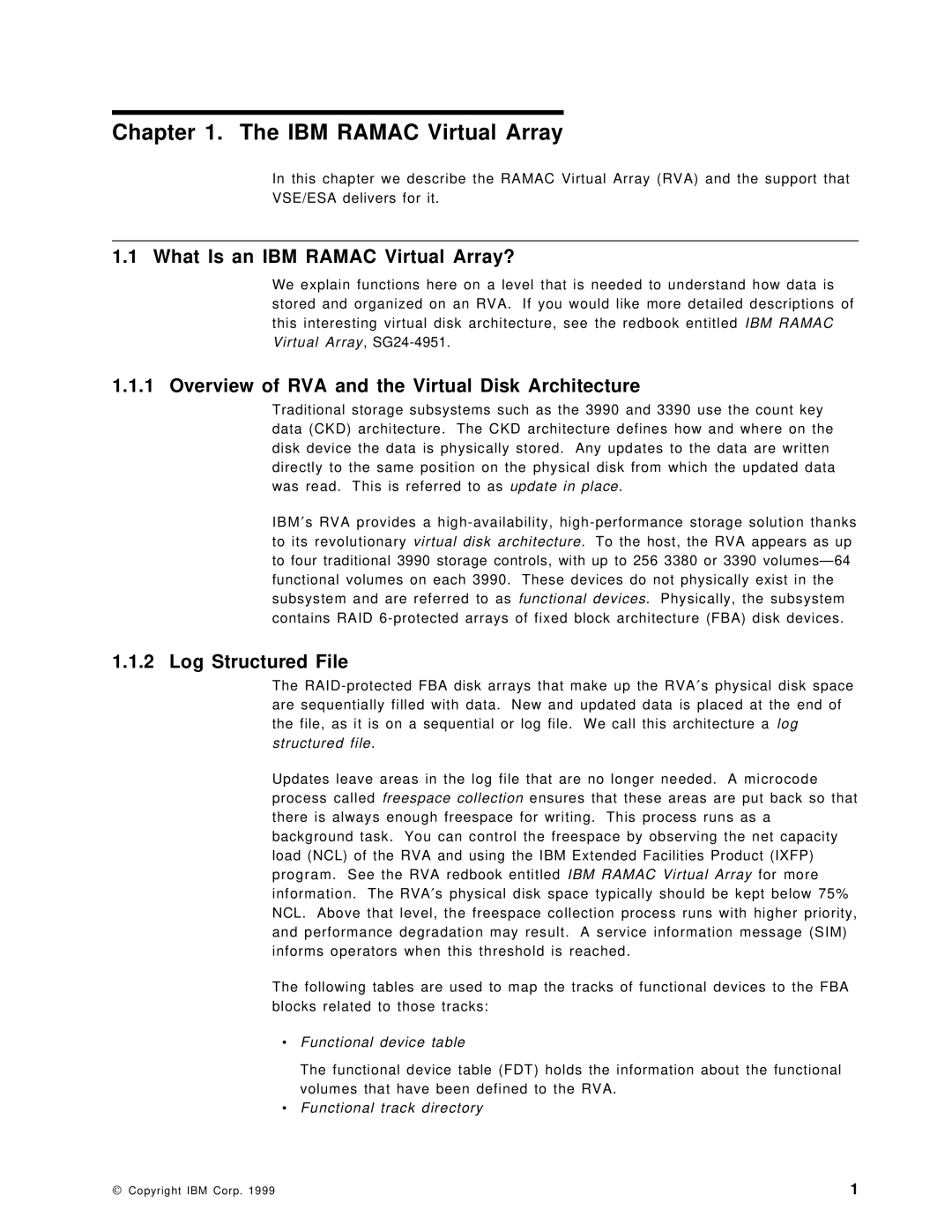
Chapter 1. The IBM RAMAC Virtual Array
In this chapter we describe the RAMAC Virtual Array (RVA) and the support that VSE/ESA delivers for it.
1.1 What Is an IBM RAMAC Virtual Array?
We explain functions here on a level that is needed to understand how data is stored and organized on an RVA. If you would like more detailed descriptions of this interesting virtual disk architecture, see the redbook entitled IBM RAMAC Virtual Array,
1.1.1 Overview of RVA and the Virtual Disk Architecture
Traditional storage subsystems such as the 3990 and 3390 use the count key data (CKD) architecture. The CKD architecture defines how and where on the disk device the data is physically stored. Any updates to the data are written directly to the same position on the physical disk from which the updated data was read. This is referred to as update in place.
IBM′s RVA provides a
1.1.2 Log Structured File
The
Updates leave areas in the log file that are no longer needed. A microcode process called freespace collection ensures that these areas are put back so that there is always enough freespace for writing. This process runs as a background task. You can control the freespace by observing the net capacity load (NCL) of the RVA and using the IBM Extended Facilities Product (IXFP) program. See the RVA redbook entitled IBM RAMAC Virtual Array for more information. The RVA′s physical disk space typically should be kept below 75% NCL. Above that level, the freespace collection process runs with higher priority, and performance degradation may result. A service information message (SIM) informs operators when this threshold is reached.
The following tables are used to map the tracks of functional devices to the FBA blocks related to those tracks:
∙
∙
Functional device table
The functional device table (FDT) holds the information about the functional volumes that have been defined to the RVA.
Functional track directory
© Copyright IBM Corp. 1999 | 1 |
